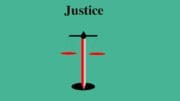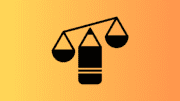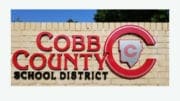By John A. Tures, Professor of Political Science, LaGrange College
It is said that with a republic, the people pick the representatives. Yet with gerrymandering, we find that the representatives tend to pick the people, who they want to vote for them. Are there solutions to the practice? And should Cobb County have to develop a solution to redo district lines, it’s not a bad idea to think about solutions to gerrymandering.
Back in October, I wrote about how a Federal District Court Judge tossed out the way Georgia districts were drawn, arguing that they had diluted the voting impact of African-Americans. The districts were redrawn and the judge and critics disagree about how helpful the changes were. But the point remains that there’s a greater likelihood of the judiciary striking down lines drawn by legislators at the state or local level. It’s time to think about solutions to gerrymandering, especially if major rulings affect Cobb County and nearby locations.
Believe it or not, the first presidential veto involved gerrymandering. “On April 5, 1792, President George Washington issue the country’s first presidential veto in response to legislation which reapportioned seats in Congress based on the census of 1790,” writes Robert Redwine in the Oklahoma Law Journal. Washington felt the bill allocated a disproportionate share of seats in Congress to the north and not enough to his native south.”
Redwine also claims that while courts have struck down racial gerrymanders based upon the Equal Protection Clause of the 14th Amendment, “[i]n contrast, purely partisan gerrymandering claims are the epitome of a political question with no discernible means of ascertaining a solution.”
Alan S. Lowenthal and his colleagues in politics thought they had the answer: independent redistricting commissions, which would draw the lines without partisan meddling. Though theirs survived, such commissions adopted by other states (like Arizona) were challenged in court on the grounds that only state legislatures are given such power, via the Constitution. Arizona’s held on, but other arguments that “unelected people would be making such decisions, rather than the representatives of “the people.” Lowenthal finds that most liberal democracies draw their districts via independent commissions, and states that the legislature to draw their own districts have more partisan bias and less electoral responsiveness, as well as more cynicism about politics.
Olivia Guest, Frank J. Kanayet and Bradley C. Love find that a computer model might work best, where humans develop the criteria for drawing districts, and computers draw the lines. “One potential solution is using computational models to automate the districting process by optimizing objective and open criteria, such as how spatially compact districts are…These results suggest a division of labour in which humans debate and formulate districting criteria whereas machines optimise the criteria to draw the district boundaries.”
Michel Balinski thinks he has an answer: Fair Majority Voting. To summarize, in voting, the Fair Majority Voting site explains “voters rank candidates in order of preference. Each ballot initially counts as one vote for its top-ranked candidate. To be elected, a candidate must reach a threshold of votes, which depends on the number of candidates to be elected: if three candidates are being elected, it is one-fourth + one vote; if four candidates are being elected, it’s one-fifth + one vote; and so on (this ensures that only the number of candidates to be elected can possibly reach the threshold). A candidate who reaches the threshold is elected. Then, votes are recounted, with any extra votes that candidate received over the threshold counted for the voters’ second choices. If, at any point, no candidate reaches the threshold, then the candidate with the fewest votes is eliminated. The voters who selected the defeated candidate as a first choice will have their votes count for their second choice. This process continues until all of the seats are filled.” Though incredibly complex to understand at first, it appears to be a system that once implemented, and voters get used to seeing the results, might catch on as a remedy to the status quo.
There’s also the “the Define-Combine Procedure, that substantially reduces partisan gerrymandering without requiring a neutral third party or bipartisan agreement,” note Maxwell Palmer, Benjamin Schneer and Kevin DeLuca. And here’s how it works: “One party defines a map of 2N equal-population contiguous districts. Then the second party combines pairs of contiguous districts to create the final map of N districts. Using real-world geographic and electoral data, we use simulations and map-drawing algorithms to show that this procedure dramatically reduces the advantage conferred to the party controlling the redistricting process and leads to less biased maps without requiring cooperation or non-partisan actors.” Seems like a primer to explain what’s going on might be the most important factor before this goes into effect, so voters and politicians can understand it.
Finally, there’s a solution I proposed when writing for the Southern Political Report. The plan that adopts the fewest split of countries should be adopted. I compared the Democratic Party map to the Republican Party map to see which split the fewest number of counties, where people choose to live. For bigger districts, the districts should be drawn within counties as much as possible, with few cross-county cracking, which is the way Tennessee legislators carved up Davidson County and Nashville into five pieces, a nakedly decided partisan gerrymandering practice. It’s perhaps of a similar spirit to what John N. Friedman and Richard T. Holden suggest in “sometimes pack but never crack,” in the American Economic Review.
Whatever is decided, it should be clearly explained to voters, determined and implemented long before the election. Most important, people who support good government and oppose corruption and partisanship have to hold their representatives accountable enough to follow this new method of drawing lines. Otherwise, opportunistic politicians will manipulate any system, even these listed here, for political advantage, and perhaps worse.
John A. Tures is a professor of political science at LaGrange College in LaGrange, Georgia. His views are his own, and do not speak for LaGrange College faculty, students, staff or administration. He can be reached at jtures@lagrange.edu. His Twitter account is JohnTures2.





